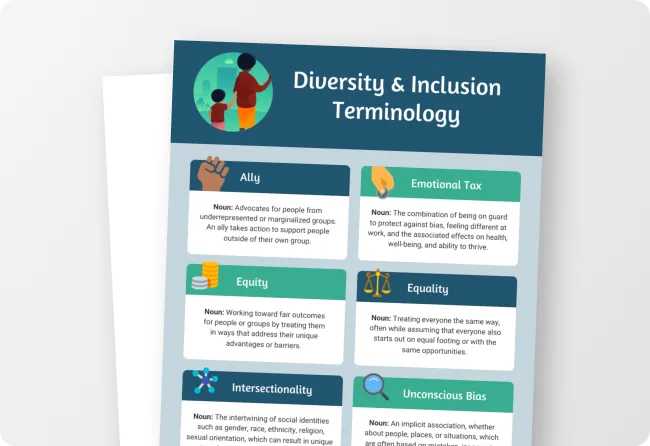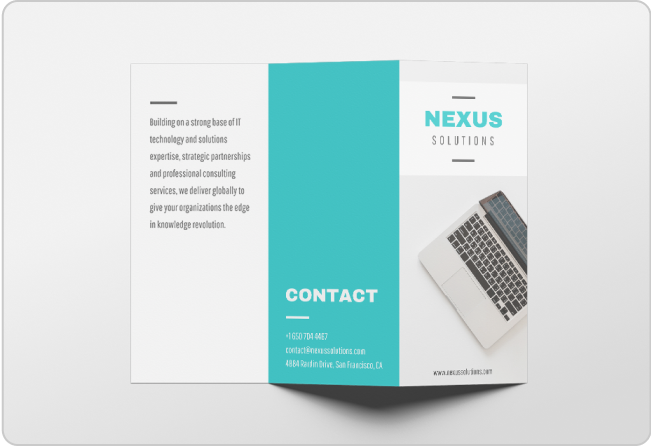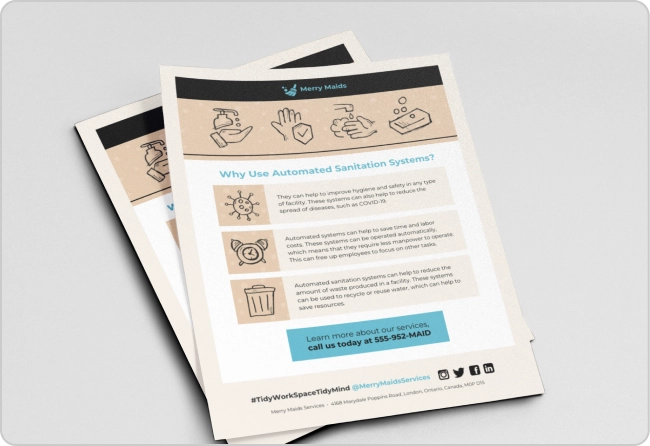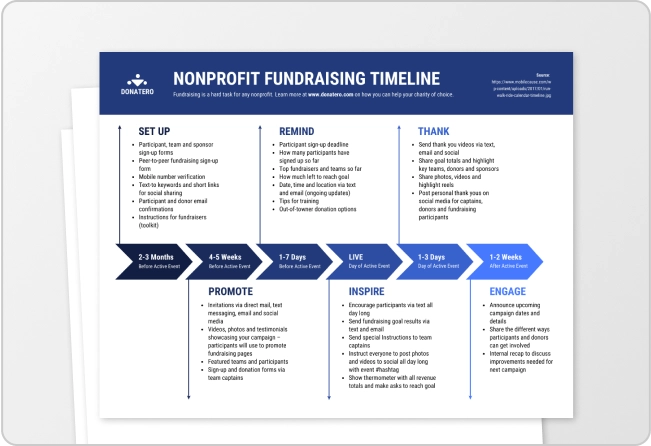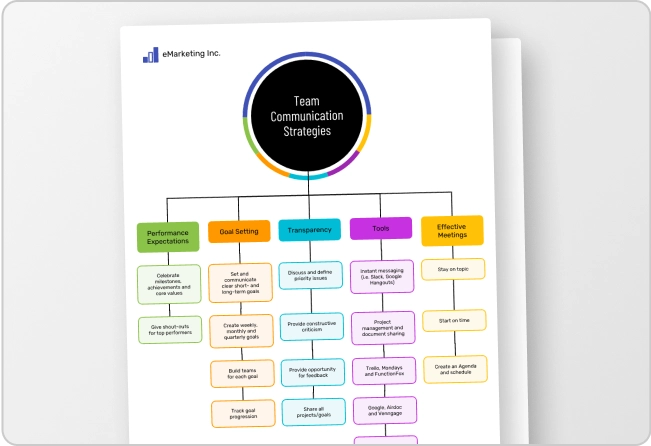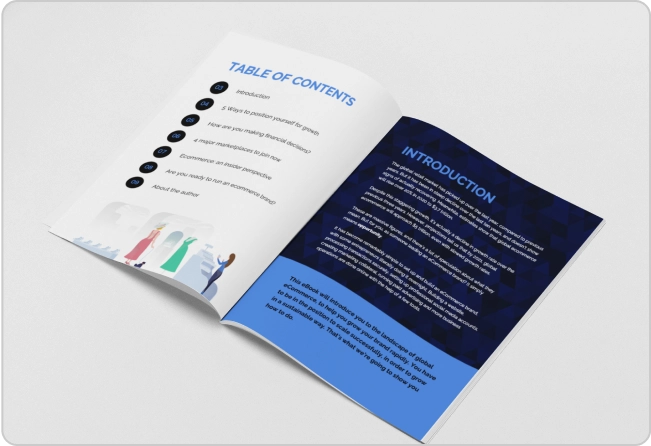
Looking for the best AI tools that matter in 2025? You’re likely tired of reading fluffy listicles about new AI tools popping up every week.
This list cuts through the noise. It covers 30+ AI tools people are actually using right now for content creation, marketing, video production, organization and design.
These picks are not random. I looked at what’s trending, what people are talking about and what other professionals have found to be significantly beneficial in their line of work.
No matter if you are a marketer, a designer or just someone trying to make sense of the AI rush, this is the list you would want to bookmark.
Top AI tools to grow your business in 2025
Here’s a handpicked, curated list of 30+ top AI tools that you should consider adding to your stack in 2025:

Venngage AI

Venngage AI is a design automation tool that transforms text prompts into professional-quality graphics, infographics and visual content without requiring design expertise. The platform features an intuitive interface that balances automation with manual customization options.
Beyond just generating visuals, Venngage AI helps you optimize every element of your design with smart features like AI copy enhancement, auto alt-text generation for accessibility, AI-driven font pairing recommendations and intelligent color suggestions.
Key features:
- Ready-to-use prompt library that helps users quickly generate relevant designs without crafting perfect prompts
- Brand Kit integration that automatically applies your company’s visual identity to all generated designs
- Extensive template library that serves as a starting point for custom designs
Best for: Content marketers and small business teams who want to create high-quality visuals without extensive design experience.
Use cases: I’m a design noob, but as a content marketer there are times when I absolutely need designs like blog illustrations and infographics. And they often take longer than I estimate.
Discovering Venngage AI has changed all of that for me because now I can just enter a prompt or choose from a ready-to-use prompt and design a visual in no time.
I can also customize the design (manually) further or personalize it to my brand’s style. In many ways, I prefer Venngage over Canva because it’s not overwhelming. It does exactly what I want and that’s it. Plus, it’s affordable.
Pricing: Premium plans start at $19/month, providing access to premium templates and features.
ChatGPT

ChatGPT is OpenAI’s flagship conversational AI model that can generate human-like text responses to virtually any prompt, question or instruction.
Key features:
- Natural Language Processing (NLP) to understand and generate human-like text based on prompts
- Advanced reasoning capabilities that can handle complex problems spanning across multiple domains
- Multimodal abilities, including image analysis and generation capabilities
Best for: Professionals and individuals seeking an AI assistant for tasks like drafting content, brainstorming ideas and obtaining information.
Use cases: ChatGPT is gradually replacing every other tool in my tech stack. I initially started using ChatGPT reluctantly, but now I can’t imagine working without ChatGPT.
It’s my brainstorming partner, grammar checker, fact-checker, LinkedIn post generator, soundboarding partner and so many other things.
It’s one tab that’s always open in my browser. With its new image generation capabilities, I’m excited to experiment more and explore everything else it can do with it.
Pricing: Comes with a free plan that allows access to basic features with usage limitations. The ChatGPT Plus plan starts at $20/month. It comes with priority access, faster response times and early access to new features.
Claude (by Anthropic)

Claude is an AI assistant built by Anthropic that excels at analyzing complex prompts, summarizing documents, drafting content and answering questions with a thoughtful, human-like tone.
It’s especially good at maintaining context over long conversations and following detailed instructions for research, writing and brainstorming.
Key features:
- Long context window allows users to analyze large documents in a single prompt
- Strong reasoning capabilities with a focus on reducing AI hallucinations
- More conversational and natural tone compared to some competitors
Best for: Users who need an AI assistant for creative writing, document analysis and critical thinking on complex topics.
Use cases: From my experience, Claude shines when working on creative projects that require nuance and a more human-like touch. Its responses feel less formulaic and more thoughtful.
I also find it useful when I need to analyze lengthy documents or when I want to develop creative content that stands out from the typical AI-generated material.
Pricing: The free plan offers limited access to Claude 3 Haiku. The pro plans start at $20/month and offer higher usage limits, priority access plus collaborative features.
Gemini

Gemini is Google’s advanced AI model that competes directly with GPT-4 and Claude. It’s designed to help users with complex reasoning needs like solving math problems, writing code, analyzing data and answering technical or academic questions across fields like science, history and business.
Whether you’re debugging a Python script or summarizing a dense research paper, Gemini can give you accurate, helpful results.
Key features:
- Integration with Google apps like Gmail, Sheets and Drive for enhanced productivity
- Advanced reasoning, mathematical and coding capabilities
- Multimodal understanding across text, images, audio and video
Best for: Users already invested in the Google ecosystem who need an AI assistant that works seamlessly with their existing tools
Use cases: I mostly use Gemini when I need a second opinion or a different perspective on something I’ve already run through ChatGPT.
Gemini excels at fact-checking and providing verifiable information that’s grounded in real data.
The Google integration is a plus, since I’ve been a Google Workplace user for a long time. I find myself switching between these tools depending on the task at hand, using each for its particular strengths.
Pricing: Gemini offers a free plan with limits. Its paid plans start at $19.99/month with better features.
Predis.ai
Predis.ai is an all-inclusive AI ad generator and content creation tool that helps in automating your complete online journey. From creating social media posts to ad creatives, it will generate any kind of post you want with something as simple as a text prompt.
It additionally allows you to create engaging voiceover videos, AI-generated ads, and videos, schedule and publish posts automatically, collaborate with your team, analyze your and your competitor’s performance, and do much more.
The user interface is pretty intuitive, thus making it accessible to even newbie editors, which is an added advantage.
Key features:
- Create social media posts, ad creatives, product videos, and so much more from one platform.
- The key benefit is that this tool converts text or URLs into branded video content instantly using AI.
- Integration with a social media and e-commerce platform that allows automatic scheduling and publishing.
Best for: Predis.ai is best for marketers, creators, and businesses looking to quickly create and automate engaging social media content.
Use Cases: Predis.ai helps businesses and creators instantly generate social media posts, videos, and ad creatives from a simple text prompt, saving time while keeping content on-brand and engaging.
Pricing: Paid options start at about $19 a month and provide you access to sophisticated customization and limitless exporting.
DeepSeek

DeepSeek is an emerging AI assistant that specializes in deep technical understanding and problem-solving. It’s particularly effective for generating code and technical writing.
Key features:
- Industry-leading code generation capabilities across multiple programming languages
- Strong technical domain knowledge in fields like computer science and mathematics
- Exceptionally good at condensing lengthy documents into concise summaries.
Best for: Developers, engineers and technical professionals seeking assistance with coding and technical documentation
Use cases: DeepSeek is great for second opinion fact-checking or a change of environment to make sure you are not getting too comfortable using just one AI tool. I’ve found its technical responses particularly impressive when dealing with coding problems.
Pricing: DeepSeek has a free plan with basic features and limited access. For advanced features, it offers pay-as-you-go pricing.
Copilot

Microsoft Copilot is an AI assistant that integrates directly with Microsoft’s ecosystem. This includes MS Office, Windows and Edge browser. Much like Google’s Gemini, MS Copilot brings the AI capabilities directly into your workflow — if you’re an existing Microsoft user.
Key features:
- Deep integration with MS Office apps like Word, Excel, PowerPoint and Outlook
- Simple text prompts for smart content generation, summaries and presentations
- Analyzes data, builds models and explains trends in plain language in MS Excel
Best for: Microsoft users who want AI assistance directly integrated into their existing tools.
Use cases: My experience with Copilot has been great for my daily work. Its integration with Microsoft 365 apps makes it feel less like a separate tool and more like an invisible assistant that’s always there when needed.
I find the Excel integration particularly valuable — having Copilot analyze data patterns or suggest formulas saves users like me hours of work. The tool feels like it was designed to remove friction from everyday tasks rather than being something you actively “use.”
Pricing: MS Copilot offers a free plan with limited features. Its paid plans start at $20/month.
Synthesia

Synthesia is an AI video-generation platform that allows you to create professional-quality videos featuring realistic AI avatars.
With Synthesia, you don’t need a camera, studio or even a human presenter. Just write your script and pick an AI avatar. Within just a few minutes, you’ll have a studio-quality video complete with voiceovers, subtitles and branding.
Key features:
- Wide selection of diverse AI avatars with natural speech patterns and expressions
- Support for over 140 languages with realistic voice synthesis
- No-code video editing tools for easy customization
Best for: Marketing teams and content creators who don’t have professional-grade studio equipment, but who want to produce world-class video content minus the post production headaches.
Use cases: I first heard about Synthesia (and HeyGen) during the 2024 Mindvalley AI Summit from Iman Oubou — and honestly, it blew my mind.
For video marketers, it’s nothing short of magic.
The ability to create professional-looking videos featuring realistic avatars speaking in multiple languages without renting a studio, hiring actors or managing complex productions is…just wow.
This drastically cuts both the time and cost of video creation while maintaining a level of quality that was unthinkable just a few years ago.
Pricing: Its plans start at $22/month for individual users with basic features. For more advanced capabilities, Synthesia offers custom-priced business plans.
Tagshop.ai

Tagshop AI is an AI UGC platform designed to help brands and marketers produce high-converting video ads in minutes—without cameras, actors, or editing skills. It turns a simple product URL into a fully-scripted, avatar-delivered marketing video, ready for social media or paid campaigns.
It’s beneficial for eCommerce brands, agencies, and social media managers who need to scale ad creatives quickly while keeping costs low.
Key features:
- AI Script Generator that crafts platform-optimized ad scripts from just a product link
- URL to Video capability that automatically fetches product details and turns them into polished video ads
- Hyper-realistic avatar library for human-like delivery without hiring talent
- Bulk video creation for running multiple ad variations and A/B testing at scale
- Advanced lip-syncing for professional, natural-looking speech delivery
Best for: Marketers, agencies, and eCommerce brands looking to scale high-quality ad production without the high cost and time of traditional video shoots.
Use cases: From my experience, Tagshop AI shines when you need fresh ad creatives for platforms like TikTok, Instagram, Meta, or YouTube—especially when you’re testing multiple hooks, offers, and visuals. It’s also ideal for launching new products quickly, where speed to market is critical.
Pricing: The platform offers flexible pricing based on usage, starting from $29 for single video creation.
Runway

Runway ML is one of those tools that makes you pause and think, “Wait, this is real?”
Originally developed with creatives in mind, Runway offers advanced video generation, editing and visual effects capabilities aimed at professional creators and studios.
It’s been used by the likes of Everything Everywhere All At Once and top-tier ad agencies. But don’t let that fool you. It’s surprisingly accessible and offers a growing suite of features that streamline video production like never before.
Key features:
- Text-to-video generation to turn simple prompts into cinematic video clips in seconds
- AI-powered video editing capabilities like inpainting, motion tracking and background removal
- Green screen capabilities without actual green screens
Best for: Creators, marketers and production teams who want to level up their video content with cutting-edge AI capabilities — without Hollywood-level resources.
Use cases: Honestly, I feel like using Runway ML feels a bit overkill for a solo creator or small teams. But if they have a free tier plan, why not use it?
Even if you’re not producing the next Oscar-winning short, Runway ML helps you stay ahead of the curve, especially if video is central to your content strategy.
I haven’t personally built a full project on Runway yet, but watching reviews like this one helped me understand its appeal.
Pricing: Free plan available with limited credits and features. Paid plans start at $15/month.
Filmora

Filmora by Wondershare is a video editing tool designed to make professional-looking videos accessible. It comes with a drag-and-drop interface, pre-set templates and a rich library of effects.
Key features:
- AI-powered scene detection that automatically identifies and separates clips
- Beginner-friendly drag-and-drop interface with built-in templates and transitions
- Large library of effects, titles and stock assets for quick edits
Best for: Casual video creators and small businesses looking for approachable video editing software with AI enhancements
Use cases: Filmora has earned a reputation for being accessible yet powerful. However, I’d approach the tool with some amount of caution. While Filmora promises simplicity, some users have reported frustrating experiences with unexpected limitations, forced watermarks and a lack of customer support responsiveness.
It’s worth trying the free version if you’re curious, but I’d recommend fully understanding the terms before you commit financially.
Pricing: Free plan includes Filmora-branded watermarks. Paid plans start at $19.99/month. It also offers one-time licenses.
OpusClip

OpusClip is an AI-powered video repurposing tool that transforms long-form videos into short, viral-ready clips optimized for platforms like TikTok, YouTube Shorts and Instagram Reels.
Its biggest appeal lies in how fast and user-friendly the process is — you don’t need to be a video pro to get pro-level results.
Key features:
- Automatic highlight detection that identifies engaging moments from longer videos
- Platform-specific aspect ratio adjustments for various social media platforms
- “Virality Score” to prioritize clips that are most likely to perform well on social platforms
Best for: Content creators, coaches, marketers or podcasters who want to repurpose their long-form videos into snackable social media videos.
Use cases: OpusClip stands out by solving a very specific problem — converting long videos into social-worthy clips — and does it exceptionally well.
The main drawback appears to be occasional processing delays during peak usage times. But for creators juggling multiple platforms, OpusClip makes staying visible without burning out a lot easier.
Pricing: Free plan available with watermark. Paid plans start at $19/month for up to 200 minutes of uploads.
Grammarly

Grammarly started as your go-to grammar and spell-check assistant. But over the years, it’s evolved into a full-blown writing aid suite with AI-generated rewrites, tone suggestions and even email drafting.
Key features:
- Real-time grammar, spelling and punctuation correction
- AI-powered suggestions for tone, clarity, conciseness and engagement
- Built-in AI writing assistant for generating drafts, responses and rewrites
Best for: Writers, students and professionals who need a polished, mistake-free copy
Use cases: In my experience, Grammarly has become a bit formulaic — many of its AI suggestions lean robotic. Ironically, other AI detectors now flag Grammarly-edited content as AI-written.
While it’s no longer groundbreaking, it’s still indispensable when you need a quick, clean edit — especially if you’re not aiming for literary brilliance.
Pricing: Free version with basic suggestions. Paid plans start at $12/month.
Rytr

Rytr is an AI writing assistant focused on helping users generate marketing copy, blog content and creative writing quickly and affordably.
It comes with a decent set of templates and tone options, though it can feel generic compared to more advanced tools.
Key features:
- Over 40 templates for different content types like emails, blog posts and ad copy
- Multilingual support for 30+ languages and 20+ tones
- Built-in plagiarism checker to ensure originality
Best for: Freelancers, marketers and solopreneurs looking for an affordable AI copywriter for short-form content.
Use cases: Rytr delivers decent output for simple tasks like blog ideas or social posts — but lacks depth for long-form content or SEO-heavy projects.
The platform is particularly strong at generating initial drafts and overcoming writer’s block.
Pricing: Free plan includes up to 10,000 characters/month. Paid plan starts at $9/month for 100,000 characters.
Sudowrite

Sudowrite isn’t your typical AI writing assistant — it’s designed specifically for screenplay writers, novelists and creative storytellers. While not as mainstream as other tools, it has a loyal following in the fiction writing circles.
Key features:
- “Story Engine” for outlining entire novels, from characters to chapters
- Plot development assistance including identifying plot holes
- “Show, Don’t Tell” feature that transforms basic descriptions into vivid scenes
Best for: Fiction authors, screenwriters or creative copywriters who need a brainstorming partner to refine their drafts.
Use cases: If you’re into creative writing — like short films or video ads — Sudowrite is a powerful AI writing partner worth checking out.
As one Reddit user shared, Sudowrite helped them push through writer’s block and improve their writing without losing their personal voice. Similarly, other users note it’s ideal for generating plot twists, building vivid scenes or adding momentum to stalled manuscripts.
Pricing: Plan starts at $10/month for 225,000 AI words.
Wordtune

Wordtune is an emerging star in the AI writing assistant space, giving Grammarly a tough fight. That’s because, unlike Grammarly, Wordtune feels more like a collaborator than a critic.
It focuses less on grammar checking and more on helping you express thoughts clearly, naturally and in your tone.
Key features:
- Smart rewrite suggestions to match the tone, simplify the language or add flair
- Chrome extension that works across email, docs and social media platforms
- AI-powered summarization and text expansion tools for clearer communication
Best for: Professionals, marketers or non-native English speakers who want to improve their writing style without sounding robotic
Use cases: Wordtune’s real-time feedback makes it perfect for quick turnarounds on client emails or reports. This video review highlights how Wordtune helps non-writers communicate more fluently.
Pricing: Free plan with basic rewrites and limited usage. Paid plan starts at $9.99/month.
Midjourney

When it launched in 2022, Midjourney took the Internet by storm for its stunning, hyper-realistic image generation.
You access it via Discord, which feels unconventional but adds to the community-driven creative process.
Key features:
- Exceptional photorealistic rendering capabilities with artistic flair
- Style mixing that blends different artistic influences
- High-resolution output suitable for commercial use
Best for: Designers and creatives who want eye-catching visuals without touching Photoshop
Use cases: Midjourney stands out for its artistic, hyper-realistic AI images and smart prompt interpretation, with experts praising its version 6 for balancing realism and creativity.
Though its Discord-based interface takes some getting used to, features like “Vary” and a vibrant community make it a top pick for many creators.
Pricing: Basic plan starts at $10/month
DALL·E 3

DALL·E 3 is OpenAI’s image-generation model that turns texts into detailed visuals. While Midjourney leans toward artistic flair, DALL·E 3 nails prompt accuracy — it understands context better and captures nuances in ways that feel almost human.
Key features:
- Exceptional prompt understanding and faithful interpretation of complex requests
- Inpainting/editing support for refining parts of generated images
- Native integration with ChatGPT (Pro plan) for effortless text-to-image workflows
Best for: Professionals without deep design expertise who want to have precise, prompt-driven control over image generation
Use cases: Unlike Midjourney, DALL·E is better at bringing your exact vision to life — whether it’s a dog in a business suit or a detailed book cover idea. And thanks to its OpenAI roots, you can try it inside ChatGPT itself — no extra tools needed.
Pricing: Available via API or included in ChatGPT Pro plan at $20/month
Canva Magic Studio

Canva Magic Studio is the AI-powered suite of tools within Canva that helps users create and edit designs, generate images and enhance their visual content without advanced design skills.
Key features:
- Magic Design that transforms text prompts into fully editable designs
- Magic Edit for precise image manipulation based on text instructions
- Magic Eraser and background removal tools
Best for: Marketers and content creators who need to produce professional designs with minimal effort
Use cases: I tried Canva Magic Studio and found it surprisingly good. Sure, it’s not perfect — sometimes the copy needs tweaking or the visuals feel generic. But for everyday content creation, it saves serious time.
For instance, the text-to-image generation produces great results. However, the Magic Edit feature can be hit or miss. It sometimes understands complex editing requests perfectly. Other times, it misses the mark entirely.
Pricing: Canva offers a free forever plan with limited access to AI features. Paid plan starts at $12.99/month with expanded AI capabilities.
Looka

Looka is an AI-powered DIY logo maker and brand kit generator that lets you create professional brand materials in minutes. It’s built for non-designers who want to quickly spin up a brand identity without hiring an agency.
Key features:
- AI-powered logo creation with endless iterations and customization
- Brand kit builder that includes fonts, colors and marketing materials
- Social media templates and mockups that auto-generate using your branding
Best for: Small businesses and startups who need professional branding assets on a limited budget
Use cases: When I needed a quick logo, I decided to test out Looka—partly out of curiosity, partly to see how it stacks up against other tools in the space.
The experience was decent: it asks a few basic questions about your preferences and industry before generating designs. While the output felt a bit templated at first, a little customization helped avoid the typical “AI-generated” look.
That said, trying it gave me a fresh perspective on the small but important UX choices that set tools like Venngage apart.
Pricing: Pricing starts at $20 for a basic logo. Full brand kits available for $96/year.
Notion AI

If you’re already using Notion to manage your work or ideas, adding AI to the mix can feel like a smart upgrade. Notion AI works natively within your existing workspace — it can help you summarize meeting notes, brainstorm ideas and auto-complete entire pages.
Key features:
- Context-aware content generation that understands your existing notes
- Summarization capabilities that distill lengthy documents into key points
- AI-assisted formatting and organization suggestions
Best for: Notion users who want in-app writing assistance, content generation and task automation
Use cases: I find Notion AI to be most valuable not as a content creator but as a thought partner within my existing workflow. Personally, I like its ability to transform messy notes into structured content with a single prompt.
Pricing: Notion AI is available as an add-on for $8/month/user
Jasper

Jasper is an AI content platform designed specifically for marketing teams, copywriters and agencies looking to scale content fast.
What sets Jasper apart is its brand voice customization, built-in templates and collaborative workflows for teams.
Key features:
- Brand voice settings to fine-tune tone and style across content
- Over 50 pre-built templates for blog posts, social media and ad copy
- SEO optimization tools that help content rank higher in search results
Best for: Marketing teams who want to generate consistent, on-brand messaging at scale
Use cases: After experimenting with Jasper for several months, I find it particularly valuable for scaling content production for multiple marketing channels.
However, I’ve noticed that longer-form content often requires significant editing to avoid repetition and generic phrasing. The collaboration features are good for team environments since they allow multiple team members to work within the same AI framework.
Pricing: Comes with a 7-day free trial available.Paid plans start at $39/month/seat
Writesonic

Writesonic is an AI writing platform focused on generating marketing content, product descriptions, articles and other business writing.
Writesonic supports over 25 languages and offers tools for everything from blog posts and ads to landing pages and product descriptions. It’s built on GPT technology and integrates with platforms like Zapier, Surfer SEO and WordPress.
Key features:
- One-click article generation with factual citations
- 100+ templates for SEO, ads and e-commerce copy
- Surfer SEO integration for keyword-optimized content
Best for: Freelancers, small marketing teams and e-commerce businesses that want fast, customizable content at scale
Use cases: Writesonic has carved out a niche by focusing specifically on conversion-oriented content.
From my research, users report that it excels at creating product descriptions that highlight benefits effectively and ad copy that drives action. The Chatsonic feature provides a more interactive experience similar to ChatGPT but with specific marketing expertise.
Pricing: Offers a free trial that caps at 10,000 words. Starts at $16/month for individuals (with word count limits).
Tome

Tome markets itself as an “AI-native” storytelling tool that generates presentations for the modern world. Unlike traditional slide decks, Tome uses gen AI to craft interactive visual narratives with text, images and even embedded content.
Key features:
- AI-powered presentation builder that turns text prompts into full decks
- Automatic layout optimization that adapts to web or mobile
- Integration with other AI tools like DALL-E for image generation
Best for: Professionals who need to create engaging presentations quickly without design skills
Use cases: I tried Tome when I had to create a slide deck in less than an hour — and it honestly saved me. It was like having a creative co-pilot that did 80% of the heavy lifting.
Sure, I had to tweak the structure a bit, but the speed and polish were impressive. Compared to tools like Gamma, Tome’s visuals are sleeker and the interface is more intuitive.
Pricing: Free plan with limited features and Tome branding. Pro plan starts at $10/month.
Fireflies.ai

Fireflies.ai is an AI meeting assistant that automatically records, transcribes, summarizes and analyzes conversations from video conferences and calls.
Key features:
- Automatic meeting transcription with speaker identification
- AI-generated meeting summaries highlighting key points and action items
- Searchable meeting repository with topic and keyword tracking
Best for: Freelancers, sales teams and remote professionals who want to leverage conversational intelligence for calls and meetings
Use cases: I used Fireflies extensively as a freelancer back in 2020 for capturing client meetings without lifting a pen. To say that it saved me time would be an understatement. It helped me stay focused during meetings since I knew I could always revisit the highlights later.
Since then, they’ve seriously leveled up with features like keyword tracking, soundbites and powerful transcript search.
Pricing: Free plan with limited transcripts. Paid plan starts at $10/user/month.
Pictory

Pictory is an AI video creation platform that specializes in transforming text content into engaging videos with automated visuals, voiceovers and editing.
Its biggest selling point is automation: just upload your script or link and it’ll pull relevant visuals, add subtitles to create a polished video in minutes.
Key features:
- Text-to-video conversion that turns written content into videos
- Branded templates for consistent visual identity
- Automatically adds captions, stock visuals and music
Best for: Content marketers who need to repurpose content into videos
Use cases: I was happy with the outcomes when I used Pictory to convert a blog into a video. The AI did a decent job matching visuals to the original content. I had to tweak a few things, but it felt like 80% of the work was already done.
The automatic voiceover quality is decent but lacks emotional range, though you can upload your own for better results.
Pricing: Free trial available. Paid plans start at $19/month for 30 video projects.
Descript

Descript is an all-in-one audio and video editing tool that honestly feels like editing a Word doc.
It offers transcription, multitrack editing, screen recording and AI voice cloning into one powerful platform. If you need to produce podcasts or videos, Descript makes the process intuitive.
Key features:
- Text-based video editing that allows you to edit video by editing text
- Overdub voice cloning for creating realistic voiceovers
- Built-in screen recording, filler word removal and subtitles
Best for: Podcasters and video creators who have a recurring need to produce high-quality video/audio content
Use cases: Discovering Descript felt like I had found a video editing cheat code. The AI voice correction sounds surprisingly natural.
While the interface takes some getting used to, there are plenty of videos on YouTube to help you shorten the learning curve.
Pricing: Free plan available. Paid plans start at $12/month/user.
Beautiful.ai

Beautiful.ai is yet another AI-powered presentation tool that helps you create designer-quality slides in just a few minutes. If you hate fiddling with PowerPoint or Google Slides, you’ll love Beautiful.ai’s interface.
Key features:
- Smart templates that auto-adjust layout and design as you add content
- AI-powered design suggestions to keep slides consistent and on-brand
- Team collaboration features for real-time reviews and commenting
Best for: Professionals or teams who need to frequently create business presentations
Use cases: I’d heard from peers how Beautiful.ai saved them time and made even basic decks look agency-made. After trying it, I could see the difference myself.
It has a wide selection of templates that accommodate most business needs. However, its automation is sometimes limiting for highly specific design needs.
Pricing: Free trial available. Paid plans start at $12/month.
Grok

Grok is Elon Musk’s bold attempt at building an AI chatbot with personality. It’s witty, sarcastic and sometimes rudely honest.
Baked into the X (formerly Twitter) ecosystem, Grok stands apart from traditional AI tools by refusing to be boring or overly sanitized. It draws on real-time info from X and offers edgy answers that don’t sound robotic.
Whether you love Musk or not, Grok is undeniably entertaining and unfiltered.
Key features:
- Trained with real-time X data for current and culturally relevant responses
- Unapologetically cheeky tone that sets it apart from neutral AI bots
- Strong capabilities in coding and technical problem-solving
Best for: Users seeking a more personality-driven AI assistant with fewer content restrictions and real-time information
Use cases: Grok is great for summarizing Tweet threads, answering questions or adding witty context in real time. It’s built to be useful and a little unfiltered.
Pricing: Grok isn’t available as a standalone product. It comes as an add-on with X Premium+ subscribers — starting at $16/month/user.
Figma AI

Figma integrates AI directly into the popular design platform to help designers automate repetitive tasks, generate design elements and improve workflows.
Instead of starting from a blank canvas, you can generate layouts, iterate on copy or auto-adjust designs with smart suggestions — all under the same roof. Figma AI is still evolving, but it already makes a strong case for AI as a design collaborator.
Key features:
- Simple text prompts to generate UI designs, layouts and wireframes
- Automated design improvements and suggestions
- Built-in copywriting assistant for faster content generation and editing
Best for: UX/UI teams looking to improve their existing Figma workflows or speed up prototyping
Use cases: Figma AI has several features that address common pain points in the design workflow. The image background removal works remarkably well, eliminating the need to switch to separate tools. The Dev Mode assistant helps bridge the gap between design and development.
However, sometimes it over-simplifies complex ideas. Still, for early-stage ideation or speeding up repetitive tasks, it’s a lifesaver.
Pricing: Free plan with limited AI features. Paid plans start at $12/editor/month.
Murf.ai

Looking to create professional voiceovers without hiring voice actors?
Murf.ai is an AI voice generator built for professionals who want studio-quality voiceovers without the hassle of hiring voice talent.
The platform gives you tight control over tone, speed and pitch. With its built-in video editor and team collaboration features, you can use Murf as a full voiceover production suite.
Key features
- 120+ natural-sounding AI voices across 20+ languages and accents
- Studio-quality voice editing with pitch, emphasis and pronunciation controls
- Seamless integration with video creation through sync and collaborative tools
Best for: Content creators, educators and marketers who want to produce voiceover-driven content at scale
Use cases: Murf is easily one of the best AI voice generators out there.
In a detailed review by Artturi Jalli, he notes how Murf.ai saved him both time and money while producing professional-grade voiceovers for YouTube content. He praises Murf’s natural inflection and pacing of certain voices, though he admits that not all voices hit the mark.
Pricing: Free plan available, but limited to 10 minutes of voice generation. Paid plans start at $19/user/month.
Adobe Sensei

Adobe Sensei is Adobe’s AI and machine learning engine that powers intelligent features across its suite of creative, marketing and analytics tools.
Adobe Sensei continuously learns to deliver more personalized tools for creative professionals and businesses since it’s built by analyzing millions of creative assets and user behaviors.
It’s not a standalone tool, but rather a deep integration that enhances what you can already do in Adobe’s ecosystem.
Key features:
- AI-powered automation in tools like Photoshop, Premiere Pro, Illustrator and After Effects
- Smart content tagging, asset management and personalization in Adobe Experience Cloud
- Predictive analytics and customer segmentation for marketing workflows
Best for: Creative teams already used to working in the Adobe ecosystem
Use cases: According to TechRadar’s review, Adobe Sensei works best in enhancing workflows without drawing attention to itself — such as automating repetitive edits or helping marketers personalize campaigns at scale.
Its ability to learn from user interactions means it becomes increasingly tailored to your workflows over time.
Pricing: Included in Creative Cloud and Adobe Experience Cloud subscriptions. Price may vary based on your subscription plan.
Airtable AI

Airtable AI blends the flexibility of spreadsheets with generative AI to help you build smarter workflows without writing a single line of code.
It intelligently interprets natural language commands to manipulate, summarize and convert data across tables and records. But while it’s impressive, some users have flagged issues with formula limitations and AI block configuration hiccups.
Key features:
- AI formulas to summarize, classify and generate content directly inside your Airtable base
- AI-powered content generation for creating emails, marketing copy and documentation from your database
- Automated data categorization and trend identification that surfaces patterns across large datasets
Best for: Ops teams, marketers, product managers or anyone using Airtable who want an AI boost without switching tools
Use cases: Airtable AI is especially handy for scaling content operations or auto-generating campaign copy. The folks at Relevance AI have even used it to power customer service ticket categorization. That said, some users feel constrained by the limited AI formula functions and lack of robust native features for chaining multiple AI actions.
Pricing: Available on paid plans starting at $20/month per user.
Envato
Envato is an all-in-one creative subscription that includes unlimited digital assets and full access to a powerful AI stack that allows you to generate images, videos, voiceovers, music, graphics and more.
With Envato’s AI tools, you don’t need multiple AI subscriptions, prompt engineering skills, or specialized creative software. Just type what you want across any tool (ImageGen, ImageEdit, VideoGen, VoiceGen, MusicGen, GraphicsGen or MockupsGen) and the built-in prompt enhancement handles the technical complexity. Within minutes, you’ll have commercial-ready content complete with lifetime licensing rights.
Key features:
- Tool-agnostic approach using leading AI models
- Built-in prompt enhancement across all tools eliminates the need for complex prompting
- Seamless workflow integration. Edit images, animate them into videos, add voiceovers without switching platforms
- Commercial-use licensing included on all generated content for global, lifetime use
Best for: Small businesses, content creators, and marketing teams who need diverse creative assets quickly without managing multiple AI subscriptions or mastering technical prompting skills.
Use cases: For startups and small marketing teams working on tight budgets, Envato is a game-changer.
Having all the necessary AI tools drastically cuts both the cost and complexity of content production while maintaining commercial-grade quality. Instead of paying for separate subscriptions to image generators and editors, video tools, voice platforms, graphics generators and music libraries, everything lives in one ecosystem with seamless integration between tools.
Pricing: Envato’s AI tools are included with an Envato subscription at $16.50/month (billed annually) or $33/month (billed monthly), which also includes unlimited downloads of 50+ million stock assets. VideoGen is limited to 30 generations, while the other AI tools are unlimited. Free users get 5 trial generations.
AI Copilot by Cloudways

Cloudways is a managed hosting provider targeting small businesses, agencies, web developers, and individual bloggers. AI Copilot takes managed hosting one step further by intelligent decision-making at run time with ready-made fixes. The AI Copilot constantly monitors the server, and once it detects an issue, it will fix it with SmartFix, without hindering your day-to-day tasks. The user can focus on their business growth instead of dealing with server management and maintenance issues.
Key Features:
- Constant server monitoring to detect issues, outline causes, and provide fast, actionable recommendations.
- Automate developer workflows by performance monitoring and interaction testing, resulting in the automation of repetitive tasks seamlessly.
Use Cases:
The AI insights can be especially useful for websites that encounter traffic spikes often and need server monitoring. The resources can be put to other uses, as Copilot does this work for you.
Also, the smartfix can help if the business does not have an in-house engineering team by not only proposing a fix but also executing it.
Pricing:
The starting price is $ 9.99/month with 12 AI credits. However, a free trial is available as well, and a 6-month free promotional offer is going on for this product.
How to choose the best AI tools based on your needs?
Most AI tools look the same at first glance. In fact, the market today is flooded with repackaged AI-wrapper tools built on top of OpenAI APIs.
They may look great on the surface, but many of them add little value beyond the prompt.
So how to stop going after what’s trending and shortlist the ones that work for you? Here are some practical tips:
Define your goals
Don’t start with “What are the best AI tools?” Start with what jobs you need to complete.
Want to auto-generate social content? Your needs are different from teams that need pitch decks or deep research. Figure out the exact goals you want to achieve and work backward to identify the right tool from there.
Look for easy integration
If your AI tool cannot talk to your CRM, calendar or whatever your team uses every day, you’ll outgrow it pretty quickly.
Tools like Notion AI and Fireflies.ai get this part right — they fit into your existing workflows like a glove so that working with them doesn’t feel like extra work.
Assess the learning curve
Did you know that 80% of users abandon new tools within the first week if they find them too complex? Same holds true for AI tools.
If it takes more than an hour to figure out how something works, you are likely wasting time, not saving it. AI is supposed to reduce friction, not introduce more of it.
Think long-term, not just cost
Evaluate an AI tool from the perspective of not just how cheap it is, but how scalable it is in the long run. That’s because cheap tools might come with hidden trade-offs. And lack of scalability shouldn’t be one of them.
Ask yourself, will the tool still be useful when your team grows or your goals shift? Just look at what companies like Venngage and Jasper are doing — free plans, value-based scalability and no forced lock-ins.
Check the feedback loop
The best way to know how good an AI tool is? Check with users who already use it.
Think Reddit threads, G2 reviews or YouTube breakdowns. These often give you an objective analysis. Don’t just choose an AI tool based on what it promises on its website.
The best AI tools solve real problems
AI might feel like it’s a magic wand, but it’s not. When used right, AI tools can take the grunt work out of your day — no matter if you’re writing content, designing infographics or editing videos.
Keep in mind the ethical grey areas that using AI tools might lead to as the technology gets better at personalization and mimicking human creativity. For now, the tools in this list are a good starting point if you want to keep up with the times.
For instance, if you want to create better visuals with less effort, try Venngage. It gives you the right amount of AI flair and creative control that you can use to design visually appealing designs.






























